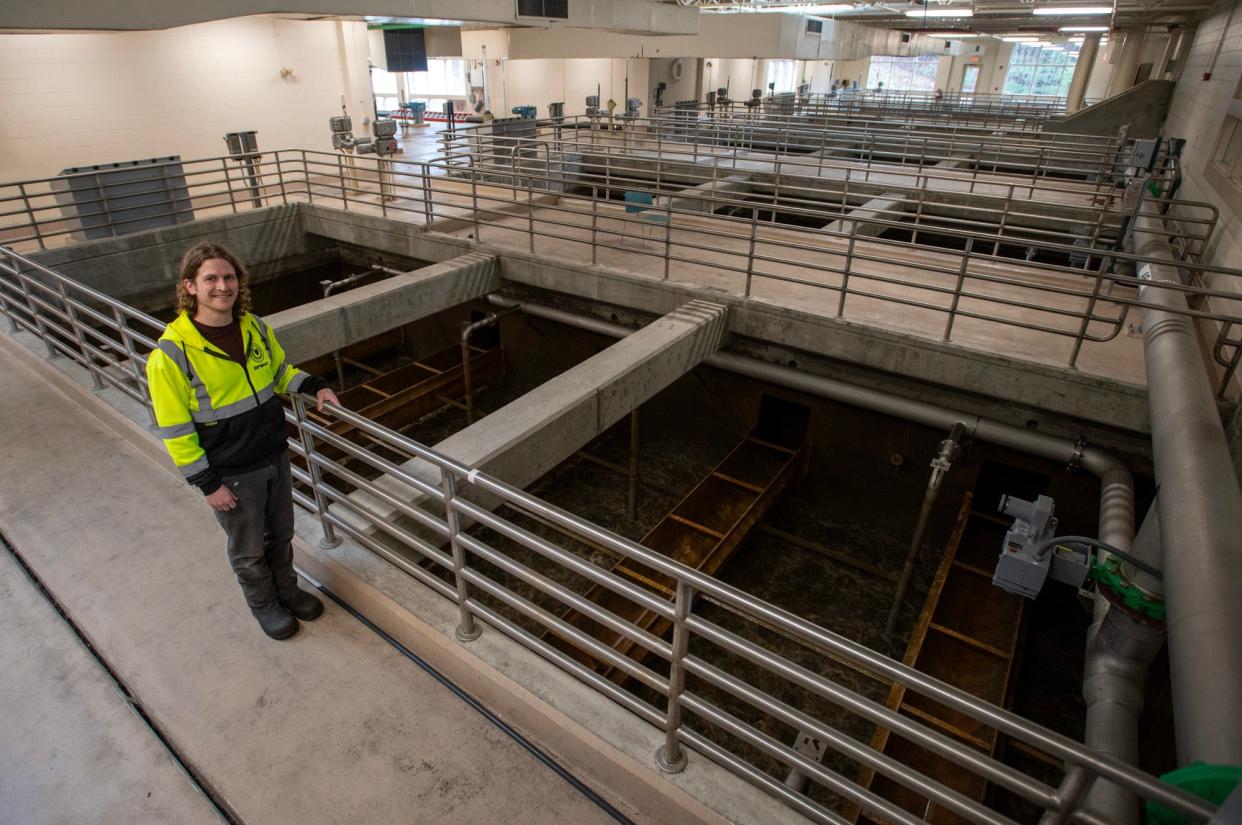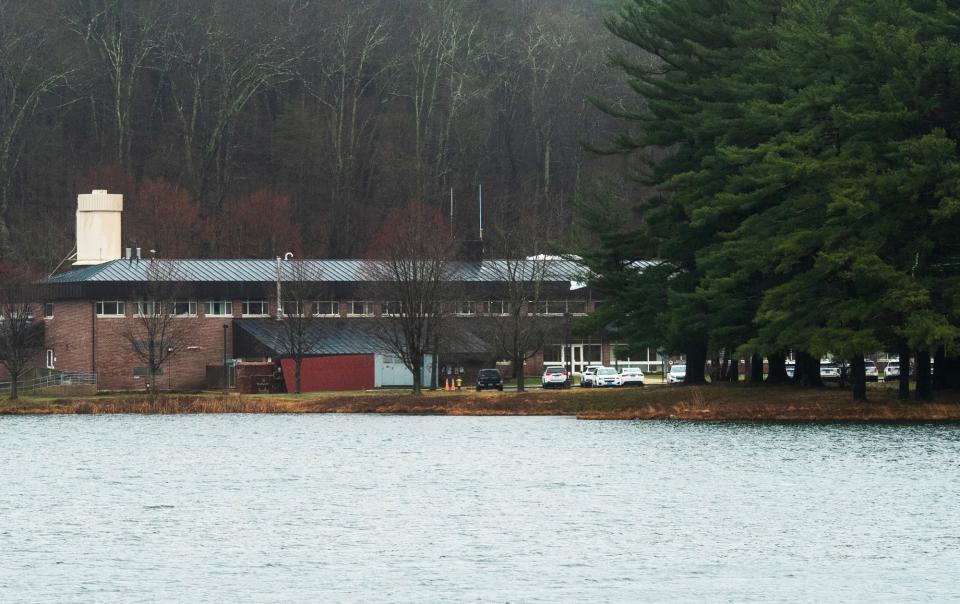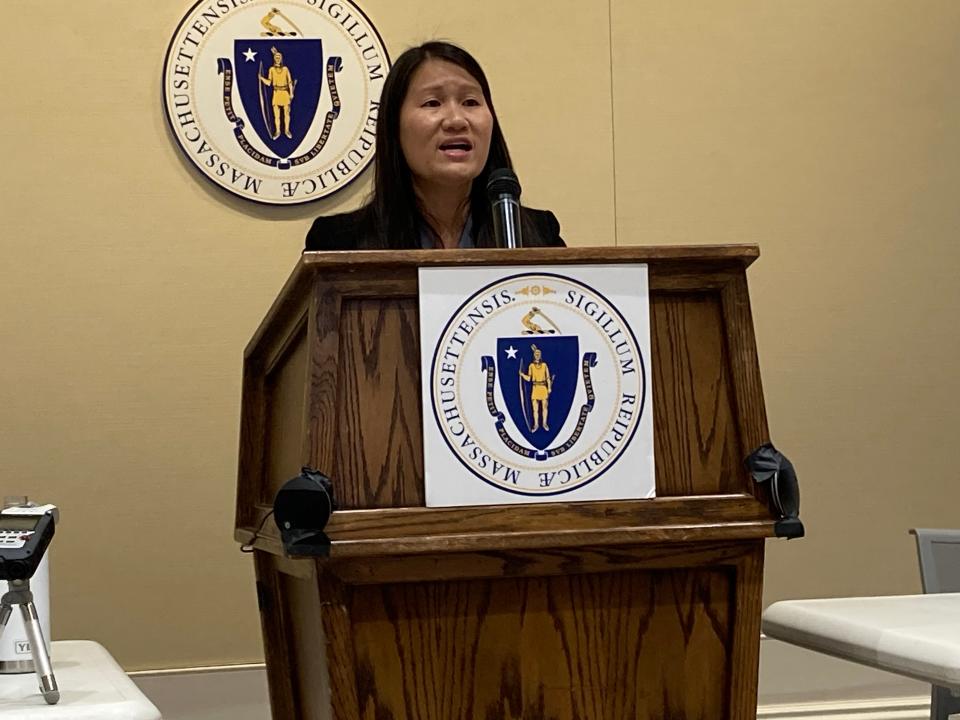New EPA rules to limit PFAS in drinking water: Worcester is 'meeting every standard'

WORCESTER ― Dozens of Massachusetts communities, including some in Central Massachusetts, don't meet a new federal standard to limit potentially harmful PFAS chemicals in their public drinking water systems.
A list of cities and towns is expected to be publicly released this week, said a spokesman at the state Department of Environmental Protection. The agency won't release the list until it's finished speaking with the communities on what steps they must take to meet the new standard.
Meanwhile, Worcester is “meeting or exceeding every state or federal standard there is,” said Sean Divoll, the city’s assistant commissioner of public works for water and sewer.
"Water in Worcester is safe. There should be no reservation about using Worcester’s water,” said Divoll.
What does PFAS mean?
PFAS stands for per-and polyfluoroalkyl substances. They’re man-made chemicals found in heat- and stain-resistant coatings in numerous products. “Forever chemicals” is a term for PFAS, because many of the chemicals don’t break down in the environment and can enter our food and water systems.
In its press release last week that announced the new PFAS standard, the EPA said exposure to PFAS has been linked to deadly cancers, impacts to the liver and heart, and immune and developmental damage to infants and children.
However, the CDC said it's unclear what the impacts are from exposure to low levels of PFAS. Laboratory tests of animals that were given large amounts of PFAS showed the potential for growth and development impacts, the CDC noted. Those animals may experience problems in reproduction, thyroid function, the immune system and injuries to the liver.
New standard is tougher
The EPA’s new standard is the first ever nationally for PFAS in drinking water. It sets limits of 4 parts per trillion for PFOA and PFOS and 10 parts per trillion for PFNA, PFHxS and “GenX chemicals.”

That standard is tougher than the Massachusetts one set in 2020 by the state DEP. The state standard is 20 parts per trillion for six PFAS chemicals: PFOS, PFOA, PFHxS, PFNA, PFHpA and PFDA. What that means is that each of the six, or a combination of any of the six, can’t exceed a limit of 20 parts per trillion.
Chemicals listed in the EPA and Massachusetts standards don't align. All PFAS in the EPA’s new rule will be included in the state's updated regulations, said a state DEP spokesman.
“The Massachusetts Department of Environmental Protection is reviewing the U.S. Environmental Protection Agency’s new PFAS regulations for drinking water," said an email from spokesman Ed Coletta. "Massachusetts has been a national leader in addressing PFAS contamination, setting the state drinking water standard at 20 parts per trillion for the sum of six PFAS in 2020, and will update our standards to align with the new federal level.
"We have provided more than $504 million in grants and loans directly to communities to combat PFAS contamination and build new treatment infrastructure. Additional federal funding is both welcomed and necessary to keep our drinking water safe for all and help our cities and towns implement these health-based protections."
Worcester: Water readings are safe
Current readings of Worcester’s tap water are below the state standard of 20 parts per trillion, according to Divoll. All Worcester readings are estimates: PFOS (.7-1.5) and PFOA (.8-3 parts per trillion); PFHxS (.6 parts per trillion); and PFHpA (.8-1.9 parts per trillion). Readings for PFNA and PFDA are at such a low level that they’re nondetectable, said Divoll.
When asked what Worcester will do to meet the tougher EPA standard, Divoll said the city must first measure for the presence of the compounds in the new standard before a plan can be developed. Whatever steps need to be taken to meet the EPA standard, Divoll said, it’s too early to determine what equipment might be needed and how much it could cost.
Meanwhile, the city’s existing water filtration plant appears to be doing the job of meeting the state standard. The plant is located in Holden. Divoll said it was built in the 1990s before PFAS contamination became a widespread public health concern. As a result, the plant wasn’t built for PFAS removal.
The facility is removing some trace amounts of PFAS arriving from Worcester’s water sources, said Divoll. Worcester’s water is supplied by 10 reservoirs located in Holden, Princeton, Paxton and Leicester.
New PFAS standard: more details
All public water systems have three years to finish initial monitoring for the chemicals in the EPA standard, and the public must be informed of the PFAS level measured in their drinking water. Where PFAS exceeds the standard, solutions must be in place to cut PFAS within five years.
It's estimated that the new EPA standards for PFOS and PFOA of 4 parts per trillion would impact 181 public water systems in Massachusetts that supply drinking water daily to the same population. Included in the 181 total are nontransient noncommunity public water systems. This category includes places like schools and office buildings that have their own water systems.
The DEP is working with 86 of the 181 public water systems because they previously or currently exceed the Massachusetts PFAS standard. Also, 95 public water systems with PFAS levels between the federal standard's 4 parts per trillion and the state's standard of 20 parts per trillion will need to address PFAS for the first time.
There is money available to address PFAS, including nearly $1 billion in the federal infrastructure law to help states test for PFAS and treat public water systems. It's part of $9 billion in the infrastructure law to help communities nationwide impacted by PFAS and other emerging contaminants.
New standard does not impact private wells
Those funds will also help remove PFAS from private wells. That is “fantastic” news, said Amie Shei, president and CEO of the Health Foundation of Central Massachusetts.

However, Shei noted the new PFAS standard falls short because it doesn't require PFAS testing of private wells.
"There are no state and federal regulations to ensure private well water is safe to consume," said Shei. Laws currently on the books require routine monitoring and testing of public water systems.
Roughly half a million Massachusetts residents drink from 200,000 private wells. In fact, 5% of the wells have PFAS levels that exceed the state standard, according to studies conducted by the state DEP, Shei said.
There is pending legislation that would give the state DEP the authority to develop regulations for private wells. State lawmakers need to pass it, said Shei, and then Massachusetts can work with technical experts to develop the regulations.
More than 1,600 private drinking water wells have received free PFAS testing from the Massachusetts DEP. The agency installed and monitors treatment systems at 49 PFAS-contaminated private water supply wells and provides bottled water at an additional 53 locations.
Contact Henry Schwan at henry.schwan@telegram.com. Follow him on X: @henrytelegram.
This article originally appeared on Telegram & Gazette: Worcester 'meeting every standard' on limiting PFAS in drinking water

